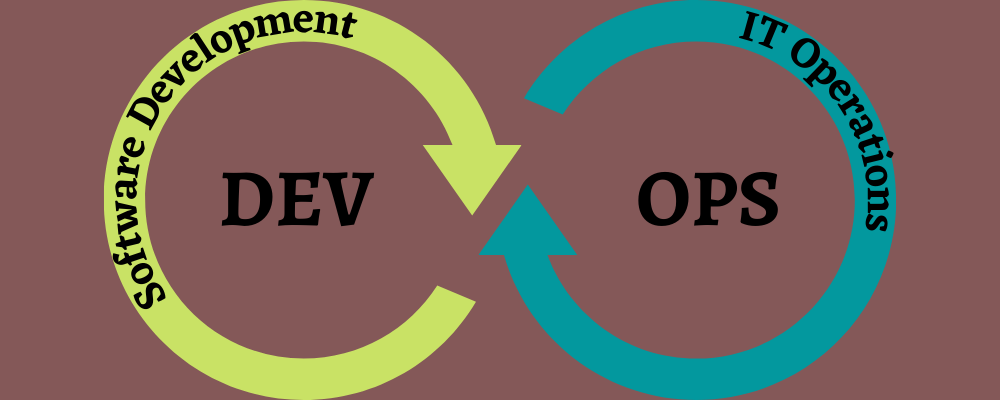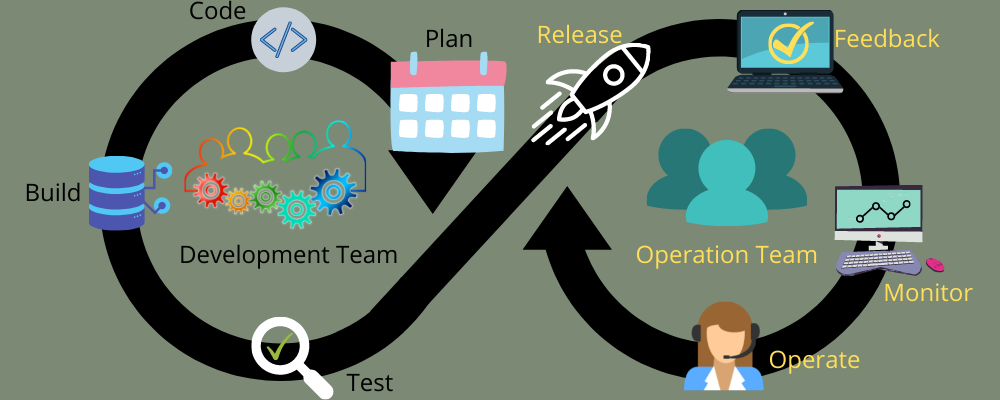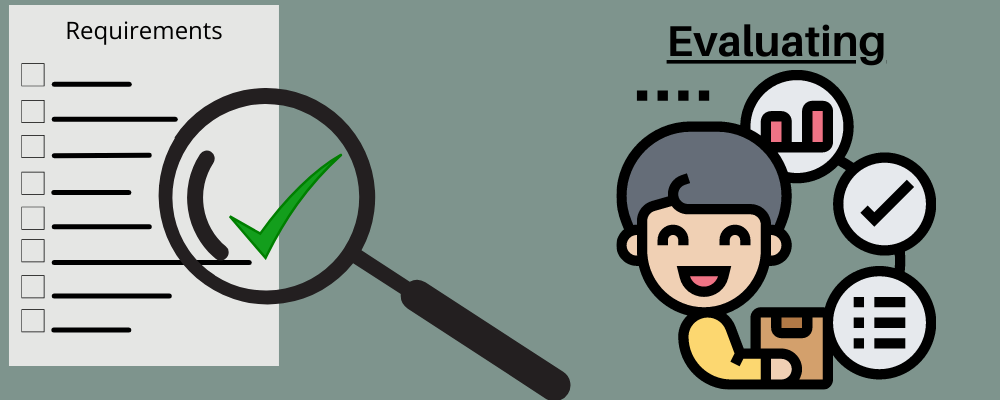DevOps is a modern concept gaining rapid momentum in the software development space. It encourages the entire development and operation to work together effectively and produce high-quality software quickly.
And releasing quality software quickly boosts customer satisfaction and gives you a competitive edge in the market.
According to GitLab’s global survey, 60% of developers are releasing their code 2x faster than before by adopting DevOps, while 56% of respondents reported that they had enabled automation fully or mostly.
This is getting bigger and better and setting trends worldwide.
But how does DevOps really work?
What makes it so compelling and useful in software development?
This article will unravel all the mysteries by taking you closer to the complete DevOps lifecycle, where you will understand each phase thoroughly along with tools you can use.
Let’s begin!
What Is DevOps?
DevOps is a modern philosophy with a set of practices, people, tools, and technology combining software development and IT operations.
The term “DevOps” is taken from two words:
Dev = Software Development
Ops = IT Operations

DevOps aims at shortening the software development lifecycle while providing continuous delivery of high-quality software. Adopting the DevOps methodology in software development helps improve your product’s quality, deploy them in quick turnaround times, and perform easy fixes after feedback.
As a result, you can delight your customers, stay ahead of your competitors, and continue achieving greater business milestones.
One of the key aspects of DevOps is using a variety of tools in different development stages, from development, planning, and testing, to monitoring, logging, configuration, release, versioning, and maintenance. DevOps tools offer automation to save you time, money, and effort.
This term “DevOps” was coined in 2009 by Patrick Debois, a Belgium consultant, project manager, and agile practitioner. He was also one of the earliest DevOps leaders. DevOps is a mindset that originated years ago and was nurtured by experts from several IT backgrounds. It mainly grew from:
- Enterprise Systems Management (ESM)
- Agile development
In DevOps, “Dev” refers not only to the developers but the entire team involved in developing a software solution. It combines people, tools, and processes from different disciplines, such as planning, testing, QA, etc. Similarly, “Ops” refers to everyone in the operations team – system admins, system engineers, security experts, database admins, operations staff, release engineers, and others.
Why Opt for DevOps?
Traditional software development methodologies involved various manual processes that were tedious, time-consuming, and required more effort. It also created friction between the two teams, and they sometimes found trouble getting along.
Although the operational and development teams might disagree on many terms, they still understand that customer satisfaction is the goal. However, customer demands are ever-changing. They need new functionalities, features, and services to ease their life and increase convenience without interruptions.
This demand creates a dilemma for businesses – whether to deliver quick changes with an unstable software production environment or maintain a stale but stable environment. However, neither are productive nor will they satisfy customer needs or demands.
Although developers may strive to accelerate software development, the operation team will go against deploying the software with rapid changes without necessary safeguards.
DevOps has a solution for both. It brings together everyone involved in software development and operations. They work by adhering to a set of common principles, such as:
- Automating manual, repetitive processes to save time
- Collaborating on problem-solving and sharing data for improvement
- Monitoring every activity
- Setting priorities, and more
Let’s understand how adopting DevOps can benefit you.
Accelerates Software Development

DevOps helps teams create software at high speed with quality. You can use various automation tools for different processes, from planning and development to testing, deployment, monitoring, and more. Similarly, you can use microservices to release updates quickly.
Reliability and Security
DevOps ensures you create a high-quality software solution by smoothly bringing about infrastructure changes and updates without affecting the software’s core. You can use monitoring tools to see how the software works in real-time and test it for security and optimization.
Faster Software Deployment
With DevOps, you can develop, test, and improve your applications faster and launch your application gracefully at faster speeds. Also, deploying products early enables you to take feedback and respond quickly to the needs. This gives a competitive advantage.
Scalability
DevOps helps you manage and operate your development processes and software infrastructure at scale. It also enables you to streamline complex systems and meet changes efficiently with security.
Effective Collaboration

With DevOps, there won’t be any gap between your development and operations team. It helps reduce friction by setting priorities and responsibilities right. DevOps boost values like accountability and a sense of ownership, allowing teams to share data, participate in problem-solving and improve upon feedback.
Customer Satisfaction
Delivering high-quality software with DevOps that can solve your customer’s pain points helps increase their level of satisfaction. You can cater to their needs by quickly delivering your software and implementing feedback.
What’s DevOps Lifecycle?
DevOps lifecycle consists of various automated processes in an iterative flow. Each phase is continuous, symbolizing an infinity loop that depicts iteration and collaboration throughout the software development lifecycle.

The development and operations teams work together in a DevOps ecosystem throughout the software lifecycle while developing wide-ranging skills. DevOps teams also use various tools and technologies to automate manual and slow processes for each phase.
The different phases of a DevOps lifecycle are as follows:
1. Continuous Development
Continuous development is the first phase in a DevOps lifecycle. It’s crucial since it involves planning the project and developing the code.
In this stage, the DevOps team understands the project’s vision and requirements and plans the software accordingly. They gather all the inputs and discuss with the shareholders. They plan by creating a list with all the tasks, breaking them down into smaller tasks for continuous development.
Once the project requirements are clear, the plan is set into motion, starting with the development team coding for the software. The developers engage in continuous coding and changing it if the requirements change or optimize it. It helps them remove bugs early instead of waiting for the testing phase and increasing the complexity.
Furthermore, the developers start working on the source code after choosing the suitable programming language(s), such as JavaScript, Python, PHP, C, Java, etc. They maintain the code and take care of version control.
Tools for continuous development:
- For source code management (SCM), you can use Git, GitLab, Mercurial, and BitBucket.
- You can also package the code into executable files using Maven, Garden, Gradle, etc.
- For planning and collaboration, you can use Jira, Trello, etc.
2. Continuous Integration (CI)

The next phase is continuous integration (CI) and is the core of a DevOps lifecycle. Your source code will be modified many times on a daily or weekly basis. So, code integration involves building new code to support the add-on features and functionalities and integrating the code into the existing one.
You would need to detect the bugs early in the code at each step via unit testing, integration testing, etc. Testing at this stage will help you understand how the updated code influences the user experience. You also must fix the issues and improve the code with more capabilities. In addition, this phase includes code review, code packaging, and compilation.
Tools for CI: You can use Jenkins, TeamCity, GitLab CI, CircleCI, etc., for continuous integration.
3. Continuous Testing
Although you can carry out tests before continuous integration to5 check the issues in your code early, DevOps demands you to do it in different phases of the DevOps cycle to ensure your code is intact without errors and bugs. This is how DevOps creates an infinite loop where processes are being done “continuously” to keep improving a software solution.
So, testing is performed again to check for bugs, errors, and other issues that can affect the code’s functionality, performance, stability, security, and efficiency. It will ensure high-quality software is deployed to maximize user experience.
You can perform different kinds of testing to check the overall software quality from the inside out. It involves functional and non-functional testing.
- Functional testing: It checks the software’s functionality to ensure everything works smoothly as expected. It can be unit testing, integration testing, sanity testing, system testing, interface testing, smoke testing, alpha testing, beta testing, regression testing, etc.
- Non-functional testing: It checks the software’s non-functional aspects to enhance the software’s efficiency and user experience. It can be performance testing, stress testing, load testing, security testing, volume testing, reliability testing, compatibility testing, usability testing, acceptance testing, etc.
Tools for testing: There are many software testing tools available for different kinds of testing. Even though you can do manual testing, using automation testing tools will help you save time and effort. Popular software testing tools are Apache JMeter, Selenium, IBM Rational Performance Tester, Junit, WebLOAD, SoapUI, Acunetix, and Wapiti.
4. Continuous Deployment (CD)

After testing the software, you must immediately fix the issues before more problems arise or a security breach occurs. Next, you can again test the software and ensure no bugs and errors are present at this stage.
When the software is finally ready, you can deploy it on your production servers. Continuous deployment (CD) is vital and the most active in a DevOps lifecycle. It involves configuration management to ensure code deployment is smooth and precise.
Your development team can release the code carefully to the servers and schedule updates and maintenance while keeping the configuration consistent across the product lifecycle.
For deployment, you can also use methodologies like containerization to package the code with its entire dependencies and components like frameworks, libraries, binaries, configuration files, etc. This enables the code to run in an isolated environment to protect against risks. Containerization tools are useful and ensure consistency throughout the development, testing, and deployment process.
Tools for CD: You can use Ansible, Puppet, Vagrant, GoCD, Chef, etc., for continuous deployment and Docker for containerization.
5. Continuous Feedback
Continuously taking feedback and working on them is an essential component of DevOps. It helps you understand the customer experience with your product after it’s deployed. This way, you can optimize it for future releases and cater to a better user experience.
Collecting feedback requires close coordination between different teams, including development, testing, deployment, support, QA, marketing, and other related teams. They analyze customer behavior regularly to improve the software in terms of performance, functionality, features, security, usability, user-friendliness, reliability, aesthetics, etc.
For continuous feedback, the DevOps teams can take customer feedback in various forms:
- Collecting feedback through social media channels like LinkedIn, Facebook, Instagram, etc.
- Conducting surveys
Tools for continuous feedback: Jira Service Management, Pendo, Slack, and GetFeedback.
6. Continuous Monitoring
The deployment phase is not the end of a DevOps lifecycle. As mentioned previously, it’s a continuous process or an infinite loop where every phase is repeated to improve the software.
With continuous monitoring, you can gain real-time, deeper visibility into your software’s overall performance, functionality, and health, from its infrastructure to high-end components.
So, after deploying your software, you must monitor it continuously to analyze how it performs. You will need to monitor it for issues like system errors, configuration problems, low memory, and so on. Security risks are expanding; hence, constantly monitor your software’s security status and employ methods to protect it.
In DevOps, you must regularly keep a tab on your software against those issues and risks. You should monitor telemetries like data and event logs, metadata, and alerts against some predefined conditions. Using this information, your DevOps team would extract meaningful insights to resolve issues faster and improve application quality.
Similarly, the operation team will supervise the software status and user activity, check for unusual system behavior, track bugs and errors, etc. And if they find any issue or discrepancy, they inform the team and work together to eliminate the issue and restore its integrity.
Tools for monitoring: Using tools to automate software monitoring will save hours while detecting and notifying issues in real-time to take immediate remedies. You can use continuous monitoring tools like New Relic, Nagios, Splunk, ELK Stack, Data Dog, Prometheus, and Grafana.
7. Continuous Operations

Like monitoring, you will need to perform various operations to ensure your software works fine, is updated regularly with improvements and more features, and delight your users.
The main aim of continuous operations is to automate the release process of your software along with its subsequent updates. The reason is your software will require maintenance after a certain time in order to meet customer demands, improve its functionality and features, and eliminate underlying issues, just like any other machine you use.
However, maintenance usually requires the developers to take your server offline, which increases software downtime. And you know, even a slight downtime can cost you significantly and affect user experience.
To combat this issue, continuous operations are automated using tools and systems to reduce or eliminate downtimes while simplifying the overall process of developing, testing, and releasing your software in different environments. By offering consistent uptime to your users, you can offer uninterrupted service to your customers, which they will love.
Tools for continuous operations: You can use container orchestration systems such as Kubernetes, Docker Swarm, etc., for continuous operation.
How to Adopt DevOps? The 4 E’s
Adopting DevOps does not mean you buy some standalone tool and start developing your software. It’s not a tool but a technique, methodology, or philosophy that must be embraced gracefully to make the most out of it.
Here’s how you can adopt DevOps seamlessly and witness growth.
1. Embrace the DevOps Culture
It is essential to understand DevOps thoroughly and its value to your software development process. DevOps culture plays an instrumental role in shaping its implementation, comprising of certain values, such as:
- Growth mindset: DevOps aims at growth for the entire team and each member. It fosters continuous learning with regular feedback, improvements, and collaboration for the greater good.
- Shorter release cycle: DevOps emphasizes accelerating the product release cycle with quality. It also results in easier planning and risk management and lets you take quick action to adapt to changes.
- Collaboration: DevOps brings together different teams working as one and solving problems. It boosts collaboration, mutual trust, and transparency within the team by offering greater visibility into the processes while aligning with the business goals.
- Accountability: Each member is accountable for their task as well as successful project completion and delivery at quick turnaround times with quality.
2. Evaluate Your Requirements

The DevOps path may take different turns for different teams and businesses according to their unique requirements.
Hence, when you adopt DevOps, identify your unique requirements and goal of creating the software. Based on this, you can plan and strategize the DevOps phases and make a swift transition. Figure out the areas where implementing DevOps seems useful, pick the right tools, and outline the requirements to fulfill those plans.
3. Emphasize Metrics
Measuring and tracking progress is crucial if you want to see improvements after adopting DevOps. For this, you must look for correct metrics to measure, which can be:
- The software’s average load time
- Mean Time to production (MTTP)
- Mean Time to Recovery (MTTR)
- Deployment frequency and speed
Nevertheless, don’t overdo it; otherwise, it can be confusing, although adding a few can be beneficial based on your needs. It will help your team fix goals for each metric and proceed with it. Also, share your growth rates, improvements, and developments with your team to keep them on the same page.
4. Employ DevOps Best Practices

Adopting DevOps can become a smooth ride if you employ some best DevOps practices, such as:
- Agile Project Management: It aims for collaboration, user feedback, shorter production cycles, and quick adaptation to changing needs. It’s in contrast to traditional approaches of longer production and release cycles with phases in sequence.
- Automation and DevOps Toolchain: DevOps seems incomplete without using tools since automation is the heart of DevOps. It ensures faster development and release with high quality while saving time and resources. DevOps toolchain comprises of plenty of tools for each phase, from developing, planning, and testing, to deployment, feedback, monitoring, and operations, as explained previously.
- Microservices: This architecture involves building software as a set of several small services running their own processes while interacting with others via an interface or API. These services are built to serve a specific purpose using frameworks, libraries, and programming languages and release them separately as one service or a group. This decoupled approach enables easy continuous integration and delivery.
- Infrastructure as a Code (IaC): It helps you configure, provision, and manage your infrastructure like networks, connections, virtual machines, etc., via code consistently with speed, instead of doing it all manually. This way, your team can deploy the system resources with better control and reliability with fewer errors.
- Security Practices: Implementing DevOps with full agility and response requires you to include IT security due to increased risks. Security is integrated end-to-end, giving rise to DevSecOps to secure the software and its infrastructure and automate security activities.
For this, you can use an integrated development environment (IDE) like Visual Studio or PyCharm or leverage containerization to isolate your build and increase security. Tools for DevSecOps can be SonarQube, Accunetix, Checkmarx, etc.
Conclusion
DevOps is a modern software development methodology that allows organizations to create high-quality software products with quick turnaround times. It includes a rich set of practices, principles, and tools to accomplish successful software development, improve customer satisfaction, and provide a competitive advantage.
So, why stay behind? Adopt DevOps and benefit from its capabilities. You can also use the best DevOps tools in every stage of your software development lifecycle to automate tasks and save time, money, and effort.



